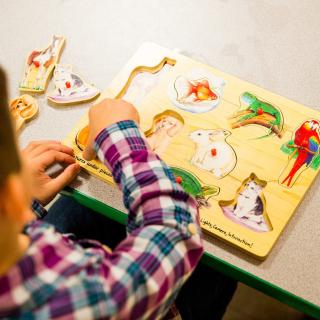Mixed-Delivery Prekindergarten
Mixed-delivery pre-K systems include programs in local education agencies (LEAs) and non-LEA settings such as private child care centers and Head Start agencies.
Most states operate their pre-K programs in mixed-delivery systems, meaning they include programs in local education agencies (LEAs) and non-LEA settings such as child care centers and Head Start agencies. Some states also include family child care (FCC) in these systems.
Data Snapshot: Family Child Care & Pre-K Policy Guides Series
We are excited to announce the release of new research from the Enriching Public Pre-K Through Inclusion of Family Child Care (EPIC FCC) initiative. Teams from Alabama, North Carolina, Michigan, and Nevada have produced a series of papers exploring strategies to better integrate Family Child Care (FCC) educators into state- and city-funded pre-K programs. Facilitated by the National Institute for Early Education Research (NIEER) in partnership with Home Grown, this work aims to make early childhood education systems more inclusive and accessible for families nationwide. Learn more about how these states are advancing high-quality, inclusive pre-K.

Including Family Child Care in Pre-K Systems: An Update at the Local Level
This project examines the integration of Family Child Care (FCC) homes into publicly funded pre-K programs across the 75 largest U.S. cities. With evidence showing that high-quality pre-K improves school readiness, many states and cities have expanded their early learning programs. In 2022-2023, 73 cities operated state pre-K programs, and 20 cities, including Washington, D.C., also ran additional city-funded programs. The report reveals that pre-K is delivered in various settings, including FCC homes, private centers, and Head Start agencies. While cities like Denver, Philadelphia, San Francisco, and Seattle have higher FCC enrollment than state programs, overall percentages remain low. The report provides insights into FCC participation and strategies for better integration within city and county pre-K systems to support families relying on home-based care.

Including Family Child Care in State funded Pre-K: An Update
Building on the work of our initial 2021 report, Including Family Child Care in State and City-Funded Pre-K Systems. This report update highlights the importance of understanding and supporting family child care (FCC) settings in the U.S., where over 750,000 children are cared for. While many states allow FCCs to receive state pre-K funding, actual participation remains low, raising questions about effective integration. The research underscores the preferences of families, particularly those from low-income and marginalized communities, for FCC settings. Recent legislation in several states reflects a growing interest in including FCC educators. The report examines enrollment trends, funding mechanisms, program specifications, and variations across states, underscoring the importance of quality in pre-K programs delivered in FCC settings.

Including Family Child Care in Publicly-Funded Pre-K
State-funded preschool is already offered in mixed-delivery settings in most states, meaning that along with public schools, children are also served in settings such as child care centers, Head Start agencies, and private schools. However, just 39% of 4-year-olds and 14% of 3-year-olds were enrolled in publicly-funded programs, such as state-funded pre-K, special education, or Head Start in the 2020-21 school year, demonstrating many children still lack access to these programs. Increasingly, decisionmakers and advocates are proposing that one part of the solution to ensuring more children have access to state- and other publicly-funded programs may lie in increasing enrollment slots available to children in other settings beyond school- and center-based classrooms, such as in family child care homes (FCCs).

Estimating the Cost of Supporting Quality
Exploring Funding for Family Child Care in Public Preschool Programs. Dive into our research on the implications of nine research-based policies for funding FCC educators in state-funded pre-K systems. Discover insights into how FCCs can be adequately funded to support quality learning environments.

State Preschool in a Mixed Delivery System
In this report written by NIEER with support from the Learning Policy Institute, researchers take an in-depth look at how policymakers in Alabama, Michigan, New Jersey, New York, and West Virginia have worked to expand public preschool while addressing challenges states face expanding their preschool systems is coordinating preschool providers that operate in very different settings, including local education agencies, Head Start agencies, child care centers, private schools, faith-based centers, charter schools, and family child care homes. All five states have taken different approaches, yet each has been able to build high-quality systems that serve at least a third of the 4-year-olds in their state. While there may be more than one path, based on the analysis, the authors identify actions states should consider taking to foster a strong mixed delivery system with consistent quality.

Mixed Delivery Public Prekindergarten in 5 localities
Differences in Demographics, Quality, and Children’s Gains in Community-Based versus Public School Programs across Five Large-Scale Systems

